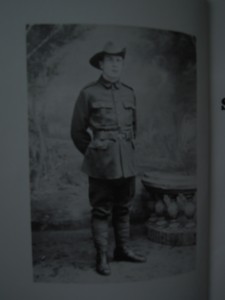In 1912, James Larkin purchased 122 Emmet Road in Inchicore. Soon renamed Emmet Hall, the building acted as headquarters for the local branch of the ITGWU.
In 1913, Cllr. William Partridge, a socialist republican and leading trade unionist who had extensive contacts among the workers in Inchicore, was appointed general manager at the hall. Partridge immediately set about the task of raising the profile and increasing the membership of the new union.
When the Irish Citizen Army was established during the 1913 Lockout, Partridge was elected Vice President of the organisation. A strong section of the Citizen Army was established locally, the Inchicore- Crumlin No. 3 Section, which had its headquarters at Emmet Hall.
 Partridge was later appointed National Organiser of the ITGWU. With the work taking him away from Inchicore, Michael Mallin, Connolly's Chief of Staff of Citizen Army, was appointed to replace him. Mallin and his family moved into the living quarters above Emmet Hall.
Partridge was later appointed National Organiser of the ITGWU. With the work taking him away from Inchicore, Michael Mallin, Connolly's Chief of Staff of Citizen Army, was appointed to replace him. Mallin and his family moved into the living quarters above Emmet Hall.At first glance, the location of Emmet Hall, situated beside Richmond Barracks, does not seem to be the ideal location for revolutionary activity. The Hall was so close to Richmond Barracks, that only a high wall separated them. Mallin however, was a highly effective revolutionary and wasn't put off. He had soon turned the location of the hall to his advantage, particularly for acquiring arms for the Citizen Army.
At this time many Irish soldiers had joined the British Army to attain a wage and secure employment. These soldiers had no loyalty to the 'King or the empire'. Contact was made with one such solider based at the barracks who was supportive of the Citizen Army. This man agreed to acquire rifles and ammunition from within the barracks and supply them to Mallin.
Through this contact, Mallin soon established a steady stream of weapons and ammunition destined for revolutionary purposes from deep within the stocks of the enemy. Importantly, this arrangement gave the Citizen Army access to modern weapons that would be of great use in the coming fight for an Irish Republic.
In his account to the Bureau of Military History, Frank Robbins a Sargent in the Citizen Army, spoke about his involvement in the supply line from Inchicore:
'Michael Mallin and his family lived on the premises of
the Inchicore Branch of the Irish Transport Union, adjacent to
Richmond Barracks, which is now known as Keogh Square. Only
a fairly high wall separated this building from the actual
barracks ground. The close proximity was of great assistance
in procuring rifles, through contacts made with a sympathetic
Irishman who was a member of the British Army. By this
contact we were able to increase our stores of up to date
rifles with advantage.
On one occasion, in the Winter 1915, it fell to my lot
to be detailed to visit Inchicore at 9 p.m., the instruction
being to get there sharp on time, neither before or after the
hour given. My journey to Inchicore was accomplished on a
bicycle. On my way up Cork Hill, just at Christchurch
Cathedral, a member of the D.M.P. stepped out and held me up
because I had no light. My bicycle was not in perfect
condition, the chain being defective, and I had no alternative
but to halt. On being questioned by this member of the
D.M.P., he asked for my name and address and was given a
fictitious one. During all the questioning one has to endure
under such circumstances I was keeping my eye on the
main purpose, to be at Inchicore by nine o'clock which could
brook very little further delay.
Thereupon I tried to impress on the police officer that I was on a very important
mission of mercy, seeking a doctor to attend my mother who
was very ill. He became suspicious and it seemed that very
little would have made him reach a decision to take me to the
nearest police barracks. My mind was made up that this
must not be allowed to happen, and when it seemed certain
that I must use my revolver he decided to let me pass on,
with instructions that I must not ride the bicycle without
a light.
This instruction was derided, for I immediately
hopped on the bicycle and set off for Inchicore. Arriving
there on time, a Lee Enfield rifle was immediately strapped
on my bicycle and I set off again to the city in less than a
minute from the time I had entered the premises at Inchicore.
Other members of the Irish Citizen Army made similar visits
of this kind from time to time, but eventually the source
dried up.'
As Robbins points out, at some point before the Rising this source dried up. This was possibly because the British, becoming more aware and concerned at the increasing militancy of Irish republicans, tightened security. But by then it was too late. Mallin's supply line had been lucrative for the Irish Citizen Army and ensured a modern supply of arms were on hand whenever they were needed.


